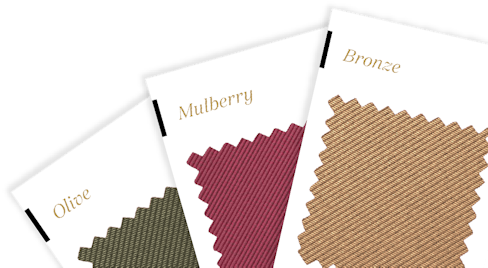Formal Attire for Men: Formal Dress Code Explained

Just got engaged? Check out our new Groom's Guide!
At certain high-profile events, it’s expected that attendees will dress smartly. That’s where the concept of formal dress codes comes in, setting the rules and standards of what to wear. But, if you haven’t attended too many formal events, you may not know exactly what to wear. The fine lines of men’s formal attire can be tricky to discern, and many worry about picking the wrong outfit.
This guide is here to help. Below, you’ll find a full breakdown of formal attire for men, explaining the basics of formal wear, key elements, and what to wear to specific events like a formal wedding. By the end, you should have a much clearer understanding of men’s formal wedding attire, so you’ll know exactly what to put on the next time you receive a formal invite.
The Fundamentals of Formal Attire: The Building Blocks of Men’s Formal Wear
Let’s begin with the basics. As the name suggests, the formal dress code is all about elegant, refined, sophisticated attire. It’s used for grand events, such as weddings, galas, opera performances, dances, and so on. The history of this type of dress goes back through the ages, evolving and changing as the centuries passed. And people still enjoy dressing up in their finery in the modern era.
But what does men’s formal wear entail? Well, if an event or wedding dress code requests formal wear, that typically means that male guests are expected to wear a suit, at the very least. For the most formal events, tuxedos or “black-tie” outfits are recommended, and other common elements of men’s formal attire include a dress shirt, dress pants, and various elegant accessories.
Tuxedos and Suits
For formal events, men should always opt for a suit or tuxedo. Tuxedos tend to be favored at many events, especially if the invite includes a phrase like “black tie optional” or “black tie preferred,” but suits are usually acceptable. Typically, darker colors are best for formal events, with lighter shades reserved for more semi-formal gatherings.
Dress Shirts and Pants
Any suit or tux should be paired with a crisp dress shirt and high-quality dress pants. These items help to complete the formal look. The pants should match the suit or tuxedo jacket in style and shade. Meanwhile, the dress shirt should usually be white, as other shades tend to have more of a semi-formal feel.
Dress Shoes
Footwear is another essential element to consider when building a formal outfit, and dress shoes are the only option if you want to stay true to the formal dress code.
Accessories
You can also finish off your formal suit with a small selection of fine accessories. If you’re opting for a tuxedo, for instance, a black tie is essential, along with an optional cummerbund. For suits, cufflinks can also be considered, and when it comes to a formal dress code, never wear a belt.
Types of Formal Attire: Navigating Dress Codes
One of the reasons so many people struggle to interpret and understand a formal dress code invite accurately is that there are several subcategories of formal attire. For instance, the black-tie and white-tie dress codes can fall beneath the formal umbrella. It’s, therefore, crucial to know the specifics of each code so you know how to prepare for any invite you receive.
White-Tie
White tie is the most sophisticated and strict dress code of them all. Its origins go back to the 18th century when wealthy nobles favored it. This dress code isn’t all that common today, but it can still be used for the most formal and fancy events.
A white-tie outfit for men must always consist of a black tailcoat or dress coat, a white dress shirt, a white waistcoat, and a white bow tie. Black trousers and the finest dress shoes complete the outfit, with optional accessories, including white gloves or a white pocket square.
Black Tie
One rung down the dress code ladder from white tie, we have a black tie. Black tie is one of the most popular formal dress code variations for weddings and similar events where hosts hope to achieve a sophisticated ambiance.
Men’s black-tie attire simply means a tuxedo. Black and midnight blue suits may also be accepted, but the standard outfit for this dress code is a tux. It should be paired with a crisp white dress shirt, dress shoes, and a black bow tie to finish.
Formal Wedding
It’s very common for happy couples to insist on a formal dress code for their big days. However, at a formal wedding, you may find that the invite mentions a slight twist on the classic formal formula. It might ask for “black-tie optional,” for instance, or “black-tie preferred.”
If you see “black-tie optional” on the invite, black-tie wedding guest attire is not mandatory, and it’s perfectly fine to come in a more relaxed but still formal outfit. For “black-tie preferred,” the couple wants people to attend in black tie but will still allow dark suits.
Formal Attire by Occasion
White Tie
For state dinners, royal occasions, and prestigious ceremonies.
Black Tie
For galas, formal dinners, operas, and formal weddings.
Black Tie Optional
For events like galas, formal dinners, operas, and weddings where a tuxedo is not required, but it is still acceptable. Alternatively, a dark suit and tie are appropriate.
Business Formal
For corporate events, business meetings, and professional conferences.
Semi-formal/ Cocktail Attire
For less formal weddings, cocktail parties, and business dinners.
Formal Wear Etiquette
There’s a specific etiquette to consider for formal attire for men. You’ll always want to wear a well-tailored, dark suit or tuxedo made from high-quality fabrics, such as merino wool. Pair it with a crisp, neat, and well-pressed white or light blue dress shirt. For neckwear, choose a classic tie or a bow tie to complement the look. Polished dress shoes, ideally black or brown, should be paired with a matching belt. Complete the ensemble with thoughtful accessories such as cufflinks and a pocket square.
The In-Between: Semi-Formal and Business Attire
On the grand spectrum of dress codes, semi-formal and business dress are the next steps from formal wear. This can generate some “gray areas,” and many people struggle to discern the precise differences separating formal and semi-formal dress codes. Knowing the general differences between the two is key to picking out appropriate outfits for every occasion.
The semi-formal dress code for men is a little more relaxed than the formal code. It sits in between the casual dress code and the formal code, giving men more options but still coming with certain rules. Building blocks of semi-formal outfits typically include suits, smoking jackets, blazers, dress shirts, brogues, loafers, and accessories like a pocket square.
Business attire is a little different. As noted in Fashion Beans, “Business formal work attire generally refers to a standard suit with a freshly pressed or non-iron dress shirt.” In other words, the business dress code typically means the type of smart suits one would expect to see in the office or at a big meeting rather than elegant tuxes or more colorful jackets and shirts.
Finally, there’s also the “business casual” code, which is a little more relaxed than business formal. The Street explains it as “the line between business casual and professional for men typically hinges on tie-or-no-tie.” In other words, a business casual outfit can simply consist of a smart jacket or blazer paired with nice slacks and loafers.
Dressing for Special Occasions: Formal Attire for Weddings and Events
It’s very common for wedding dress codes to specifically request formal attire, along with other grand events, like galas and black-tie gatherings. Formal attire is the most common and best-fitting choice for fancy occasions, and male attendees have to know how to follow the desired code and dress appropriately for each one.
Weddings
For a formal wedding, the best thing to do is read the invite before picking out any outfit. It’ll tell you multiple important pieces of information, including the desired dress code, the wedding theme, the venue, and the date. You can use all that to help inform your choice of wedding attire.
For instance, a wedding might be held in winter, with a “black and white” theme and a formal dress code. From that, you can see that you should opt for heavier fabrics to keep yourself warm in the cool winter weather. You also see it’s best to opt for a black suit to stick with the theme rather than any other shades or colors.
Black Tie
A lot of special occasions invites specifically call for black-tie attire. At a black-tie event, as discussed earlier, men need to wear tuxedos to meet the code’s traditional parameters. Dark suits may also be accepted, but if you want to avoid looking out of place, opt for men’s tux rental from a trusted provider like Generation Tux.
You can pair your tuxedo with a crisp white dress shirt and fancy lace-up dress shoes. The only real accessories you need to finish that outfit are optional cufflinks, a cummerbund, and the all-important black bow tie itself. With a full tuxedo like that, you should fit in perfectly with the other male attendees without worrying about overdressing or underdressing.
Other Events
Many other events may call for formal attire. Some examples are religious ceremonies, engagement parties, dinner parties, galas, charity events, and conferences. In general, for each event, it’s best to thoroughly read the invite to discern the right kind of outfit or consult with other guests. If unsure, stick with a classic like a dark suit or tux.
Seasonal and Material Considerations: Seasonal and Textural Elements in Formal Wear
It’s always important to think about the time and weather conditions of each event when deciding on a formal outfit. Depending on the time of year and the nature of the occasion, you can experiment with slightly different texture options and layers to ensure that you stay comfortable while also maintaining a formal aesthetic.
Summer and Spring
You can expect the conditions to be quite pleasant for summer and spring events. It’s common to hold events like weddings outdoors in the daytime at this time of year. As such, it’s often recommended to opt for lighter fabrics in your formal wear. Men may even opt for a waistcoat or crisp, wrinkle-resistant vest, if appropriate, rather than a suit jacket.
Winter and Fall
During the cooler months of the year, you’ll want to layer up in your formal outfit, as well as pick heavier fabrics to keep you warm and comfortable. A wool tuxedo or suit jacket could be an option for a winter wedding, for example. That should help you remain on the theme and in alignment with the dress code without feeling too cold during the big day.
Accessories and Finishing Touches: Elevating Your Formal Look with Accessories
Accessories can be excellent additions to a formal look when used appropriately. In general, for formal outfits, the key is not to go overboard with the accessories. You can still use one or two but don’t fill out your outfit with extras and add-ons. Otherwise, it may look too much, and you could look out of place next to men in more subdued outfits.
Common accessories to complete a formal ensemble include cufflinks, a pocket square, and a bow tie. Cufflinks can draw attention to your sleeves and elevate a jacket – ensure the sleeve length is correct to avoid an awkward look. A pocket square, meanwhile, can add a pop of color, while neck and bow ties make a suit or tuxedo look more formal and sophisticated.
Common Mistakes and How to Avoid Them: Navigating Formal Attire Pitfalls
Even when you know the ins and outs of formal attire, it’s still easy to make little mistakes with your outfit. Here’s a brief list of some common mistakes that men might make when picking out a men's formal outfit, along with tips and solutions to help you when dressing for the occasion:
- Overdressing: When it comes to formal events, it’s quite hard to overdress. The only case where you might be overdressed is if you turn up in a full white-tie outfit when other guests are only wearing suits or tuxedos. Double-check the invite and consult with other guests to understand what other people are wearing.
- Underdressing: It’s much easier to underdress for a formal event accidentally. You should never wear items that could fall into the semi-formal or casual category, like jeans, khakis, casual blazers, chinos, etc. If in doubt, or if you feel your outfit is at risk of not being formal enough, upgrade to a smarter suit or tux.
- Wrong Colors: Colors are important at formal events. Often, dark colors are the way to go. Lighter shades or patterns tend to be more associated with semi-formal occasions, so stick with the darkest shades, like black and midnight blue, to minimize the risk of an out-of-place outfit.
Conclusion: Your Go-To Checklist for Men’s Formal Attire
As we can see, men’s formal wear doesn’t need to be too complicated. While it can be intimidating to receive a formal invite, it’s easy to pick out an appropriate outfit once you know the basic rules. In general, all you need to remember is that suits and tuxedos are the most common go-to elements of formal clothing for men, and you’ll rarely look out of place if you wear one of those.
Hopefully, this formal attire guide has given you the information you need to prepare for your next formal occasion. We’ll finish off with this simple checklist to keep in mind the next time a formal invite comes along:
- Check the invite to learn about the desired dress code, date, and venue of the occasion.
- Decide whether you’re wearing a suit or tuxedo.
- Complete your outfit with a dress shirt and pants.
- Finish off with appropriate footwear and accessories.
Frequently Asked Questions
What is the difference between a tuxedo and a suit?
When it comes to formal men’s attire, tuxedos and suits are the standard formal dress code for men at many events. But there is a difference between the two styles of formal attire for men. For example, you’ll wear a tuxedo to black-tie events, such as galas, weddings, and formal dances. A suit is more versatile. You can suit up for business meetings, a hot date, and, of course, a wedding. Another key difference is that tuxedos feature satin details, while a suit does not.
Can I wear a black suit to a black-tie event?
If the black tie event states “black tie optional,” then yes, you can wear a black suit to a black tie event. A black suit isn’t a tuxedo, so don’t try to fake it by adding a bow tie; it won’t meet the dress code.
What accessories are essential for formal attire?
A wide range of accessories can add the finishing touch to formal attire for men. Some of the must-haves are cufflinks, a pocket square, and formal neckwear, like a bow tie or necktie.
Do I always need to wear a tuxedo for a formal event?
No, you don’t have to wear a tuxedo at every formal event. However, if there’s a specific formal dress code for men, like “black tie,” then you should wear a tuxedo.
Is a bow tie required, or can I wear a necktie with formal dress?
You don’t always need to wear a bow tie. There are many formal and semi-formal events when wearing a necktie with a suit is perfectly acceptable. However, if the event is a strict black tie affair, wearing a bow tie is mandatory. Always check the invitation or ask the host if you’re unsure.
Can I wear formal attire without a jacket in warmer climates?
When you think about formal attire for men, a suit jacket always comes to mind. However, in warmer climates, wearing a suit jacket can sometimes make you feel uncomfortable. Fortunately, sometimes you don’t have to wear a jacket with formal men’s attire. A vest is a stylish alternative, but if you must wear a jacket and the event isn’t black tie, try lighter-colored options.

Roshana Pourvakil
Roshana Pourvakil has been with Generation Tux since 2022, combining expertise in weddings, formalwear, and fashion with a passion for impactful marketing. She values the transformative power of suits and tuxedos, blending timeless sophistication with modern style. Her work includes leading campaigns and creating narratives that inspire unforgettable wedding moments.
Link to bio pageFeatured Products
Get started.
Stylish suits and tuxedos delivered straight to your door. See our collection and rent now.

